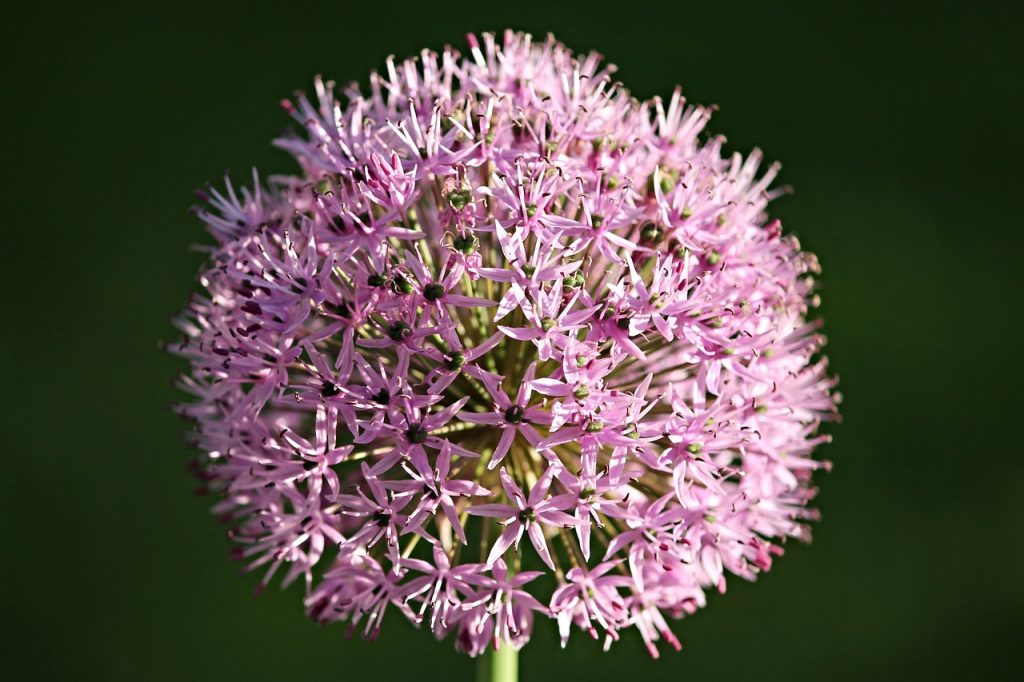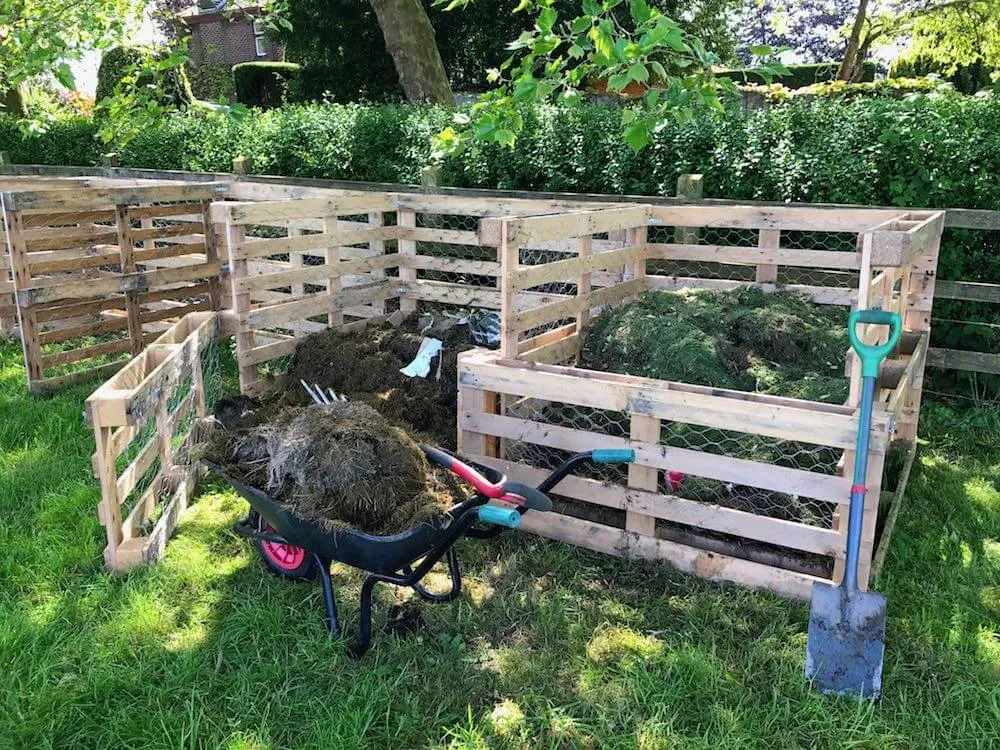How & when to plant Allium bulbs
 Lee Burkhill: Award Winning Designer & BBC 1's Garden Rescue Presenters Official Blog
Lee Burkhill: Award Winning Designer & BBC 1's Garden Rescue Presenters Official Blog

Planting Allium bulbs in your back gardens, flower beds, containers, or balcony gardens is a great way to add some early summer drama to your planting schemes and also help out the bees. These bright purple flowers stand tall and strong in our flower beds, often acting as a focal point in our gardens. When other spring plants are coming to an end, Alliums reach for the stars creating a real wow factor.
Let's take a further look at how to plant Alliums in your gardens.
This page contains affiliate links for products I use and love. If you take action (i.e. subscribe, make a purchase) after clicking a link, I may earn some gardening commission which helps me keep the Garden Ninja Blog free for all.
Alliums are ornamental flowering bulbs closely related to the Onion family. In fact, when you open a bag or box of Allium bulbs, you'll get the district onion smell with them. Allium is its own plant genus, and the Latin for Allium translates as 'Garlic'.
The number of Allium species varies greatly from around 260-979 mainly because there are so many bred 'cultivars' of Alliums each year. Where two or more species are crossed to create even more vivid or outlandish Alliums.

Alliums are best planted in the Autumn (September to November). This gives them enough time to establish and take on some water and nutrients before the cold winter snap.
However, Allium bulbs can be found pretty much year round with online retailers. Mainly because they can be grown across the globe on a large scale meaning there's a steady supply of Allium bulbs.
In reality, the best time to plant Alliums is whenever you buy them. Don't be tricked into leaving them in a shed for Autumn or in dark storage. The likelihood is you'll forget about the Alliums, and they will rot.

The only conditions you don't want to plant Alliums in are frost, snow or when the garden is flooded. Besides that, a dry day when the ground is easy to work with is fine for planting Alliums.
So you've bought some Allium bulbs, and now it's time to get them in the garden ready for Spring. This guide is going to show you my step-by-step beginner's guide to planting Alliums in your garden. Choose a dry mild day and grab yourself the following tools:
When your Alliums arrive, it's important to unbox them and check for any damage, fungus or rot. There's no point in planting damaged or sickly bulbs. If any bulbs feel soft or like they're oozing, we need to recycle these instead. So discard these in the compost bin.

Using a trowel or dibber, dig a hole that's 3x the depth of the bulb. You can measure the Allium with a ruler and then multiply that number by 3. That's the depth to plant them. So a bulb of 6cm would need to be planted at 18cm in depth.

You need to plant the Allium with its bottom or roots pointing down. For some bulbs, it's easy to see as the roots hang down. For bulbs without visible roots, look for the flat side. This is the bottom. The top usually has a little sprout at the top where the leaf scales or tunic terminate.

If in doubt and can't tell the top from the bottom, then plant sideways to split the difference.
Did you know that you can take my course and learn how to become a Garden Ninja yourself? Click here for details
Now you've dug your hole and identified the bottom of the Allium, let's get the bulb into the ground. Push it firmly to the bottom of the hole and then backfill it with the soil you've just excavated.

Don't be tempted to add feed or any compost into the hole. The original soil is best, and any compost should be used as a mulch after flowering instead. Then it's a case of waiting for the bulb to flower next year. Unless it's really dry I don't water them in but leave them to settle. Usually, a good rain fall gives them enough water during the bulb's dormancy period.
Alliums are tall plants with heavy flowers on top of long thin green stems. This gives you an idea that they will need some serious support not to flop over.
Alliums are best planted at least 3x their size in depth.
Meaning if a bulb is 5cm in depth, it needs planting 3x this measurement. ie 15cm deep in the soil.

This may seem really deep, but the depth helps support the Alliujms in the summer and stops you from needing to stake or tie them up, which looks unsightly. Planting Alliums at 3x their depth also helps protect the bulbs in winter from surface frost, which can kill them.
Alliums flower from May to June, helping boost your garden flower beds before the riot of summer colour arrives. It's always best to check your specific species and cultivar of Allium as plenty now have been bred to flower later in the season.

Alliums propagate themselves by forming small bulbs off the main bulb. These bulblets can be split every 2-5 years. It's best to divide Alliums every 3-5 years.
Alliums need a free, draining, rich soil. Alliums hate water-logged or heavy clay soil, which causes them to rot. If you have heavy clay soil and want to grow Alliums, grow them in pots and then part dig these pots into your borders when they have sent out growth each April. When they finish flowering, lift the pots and overwinter them next to a shed, cold frame, or somewhere out of the way. Checking that they don't dry out in winter.
Alliums are one of the few bulbs that do quite well planted closely together. It helps provide a more realistic drift of plants. However, you don't want to try to plant one bulb on top of the other or squeeze them in.
Give each bulb at least 2 inches of space between each bulb. When dividing bulbs again aim to plant out at last 2 inches away from the original bulb.
There are so many different types of Alliums it can be hard to know which to choose. Take a look at my top 6 Alliums species and cultivars. All of which I've planted here at Garden Ninja HQ.
This is a mix of different-sized hybrid Alliums. Varying from purple and pink to white. This is a common selection great for planting en masse in flower beds.

Probably the biggest most boldest of all Alliums. This cultivar reaches the dizzy height of 1.5m with a huge round flower head.

Small red burgundy flowers at 90cm tall. Red Mohican is an unusual Allium. It has a maroon-red drumstick-style flower with Mohican-style tuft at the top. These are tipped with tiny white flowers. Great mixed in a herbaceous flower bed or with other hot border colours like yellow and orange.

The classical pink Allium flower. This species grows to just 50cm, so it is great for containers and smaller gardens. Flowering in May to June.

If you want to mix up your Alliums, then why not choose a giant white cultivar? Mount Everest Allium reaches up to 1.2m tall with bright white flowers.

Similar to 'Mount Everest' but with smaller delicate flowers. Allium 'Ping Pong' reaches up to 1m tall late white flowers in August, great for late season interest.

Given they put on so much effort to grow and flower each year, a good peat-free homemade compost mulch in Autumn or liquid plant feed around September is a good idea. You can also use liquid tomato feed after they have finished flowering. I prefer to use homemade compost or Comfrey team as they are both organic and help close the loop on our garden recycling, which is super important as Garden Ninjas!
Whilst Alliums are usually pretty bulletproof as far as flowering bulbs go, there are a few niggles, pests and diseases you need to watch out for when planting allium bulbs. Here's a list of common problems and pests that affect allium flowers, along with solutions for fixing them!
To deter onion flies, cover allium plants with floating row covers or fine mesh netting to prevent adult flies from laying eggs near the soil. Avoid planting alliums in areas where onion flies have been a problem in the past. Remove and destroy any infested bulbs or plants promptly.
Control thrips by regularly spraying affected plants with insecticidal soap or neem oil. Introduce predatory insects like lacewings or minute pirate bugs to help keep thrips populations in check. Ensure adequate air circulation around plants to reduce humidity, which favors thrips infestations.
Remove and destroy affected leaves to prevent the spread of allium leaf miner larvae. Apply sticky traps near allium plants to capture adult flies. Avoid planting alliums in the same location for consecutive years to disrupt the life cycle of the pest.
Practice crop rotation and avoid planting alliums in the soil where white rot has been identified. Improve soil drainage to reduce moisture levels, as the fungus thrives in waterlogged conditions. Solarize the soil by covering it with clear plastic to kill fungal spores.
Remove and destroy infected plant material promptly to prevent the spread of rust spores. Apply fungicidal sprays containing sulfur or copper to affected plants, following label instructions carefully. Avoid overhead watering to minimize moisture on foliage.
Place barriers such as copper tape or diatomaceous earth around allium plants to deter slugs and snails. Handpick these pests in the evening or early morning when they are most active. Set up beer traps or use commercial slug baits sparingly as needed.
Improve air circulation around allium plants by spacing them adequately and pruning nearby vegetation. Remove and dispose of infected plant material promptly to prevent the spread of grey mould spores. Apply fungicidal sprays containing chlorothalonil or thiophanate-methyl as directed.
Control aphids by spraying affected plants with a strong jet of water to dislodge them. Introduce natural predators such as ladybugs or lacewings to help keep aphid populations in check. Apply insecticidal soap or neem oil to affected plants, focusing on the undersides of leaves. My preferred method is using a mix of 1/8 washing up detergent to water and spraying the aphids.
Rotate allium crops with nematode-resistant plants such as marigolds or mustard greens to reduce nematode populations in the soil. Solarize the soil by covering it with clear plastic to kill nematodes and their eggs. Apply organic soil amendments such as compost or aged manure to improve soil health and suppress nematode activity.
Remove and destroy infected leaves to prevent the spread of leaf blotch spores. Apply fungicidal sprays containing chlorothalonil or mancozeb to affected plants, following label instructions carefully. Avoid overhead watering to minimize moisture on foliage.
Alliums are a fantastic addition to any sized garden. Great for containers or flower beds, these wonderful tall, statuesque flowers will add drama and much-needed pollen for bees. So what's stopping you from growing them?
Have you got pictures or advice you would like to share with the Garden Ninja community? Then let me know on social media where you can Tweet, Facebook or Instagram me! Why not subscribe to my Youtube channel for even more garden design hints and tips?
Happy Gardening!








JOIN THE NINJAS

Be the first in line for new Guides, Discount codes and Offers